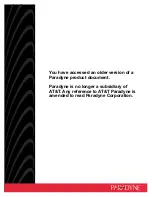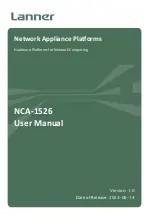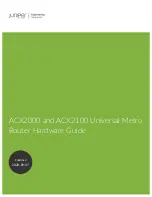
3-16
Server Cards
Model No.
Running Head
ACS-MCC Card Error Messages
MCC Card
3.5
ACS-MCC Card Error Messages
Refer to Appendix B in the System Reference Guide for further information on Error
Messages regarding this card.
3.6
ACS-MCC Card Troubleshooting
MCC card problems could indicate a number of possible causes, including:
•
Misconfigured IP parameter at the far end
•
Faulty cabling between the MCC LAN port and the LAN
•
T1 or E1 network failure
•
Improper network configuration
•
Improper MCC card configuration
Typically, a problem is indicated by the inability to route IP traffic to/from or through the
MCC card. You can perform numerous tasks to isolate the trouble and clear it. When
troubleshooting problems on IP communications through an MCC card, follow this general
sequence:
1. If all IP traffic is affected, verify that the US/EUR jumper is correctly placed to match
the US/EUR jumper on the chassis. The MCC card performs a self-test on power-up.
A “healthy” card will have a green LED lit on the front panel. Do not proceed with
further steps until a green LED is present.
2. Verify that the Ethernet Port (E) is actv and that the correct IP address (IPADDR) and
NETMASK have been entered. At this point, attempt to “ping” (from the CPU card
TCP/IP screen) the IP address of the MCC Ethernet port from another device on the
LAN. Pressing N from this screen will display the Network Statistic registers for the
Ethernet port. Analyze the information to determine the cause of the failure. Do not
proceed with further steps until this ping is successful.
3. From the CPU Main Menu screen, go to the TCP/IP screen by pressing I. Verify that
the options and addresses on the TCP/IP screen are correct. Press “P” (for ping) and
enter the IP address of the MCC card Ethernet port.
4. If Step 3 is not successful, verify that the DEFAULT IP PORT is set to serv and that
the DEFAULT IP SLOT is set to the chassis slot in which the MCC card resides (P1,
P2, or P3). At this point, attempt to ping the card again by pressing P. Do not proceed
until this ping is successful.
5. Verify that the T1 or E1 network is working properly by checking for current CGA-Red
and CGA-Yellow alarms. If no CGA alarms are present that would affect IP traffic,
continue with step 6.
Summary of Contents for 600
Page 1: ...Server Cards Reference Guide Release 5 3 1 September 2000 ...
Page 4: ...Model No Running Head ...
Page 10: ...vi Server Cards Model No Running Head Contents ...
Page 14: ...x Server Cards Model No Running Head Figures ...
Page 56: ...2 32 Server Cards Model No Running Head ACS FRS Server Card Specifications FRS Card ...
Page 74: ...3 18 Server Cards Model No Running Head ACS MCC Card Troubleshooting MCC Card ...
Page 110: ...4 36 Server Cards Model No Running Head ATM Server Card Specifications ATM Card ...
Page 150: ...5 40 Server Cards Model No Running Head ISDN PRI Card Troubleshooting ISDN PRI Card ...
Page 208: ...7 18 Server Cards Model No Running Head IMUX Card Troubleshooting IMUX Card ...
















































